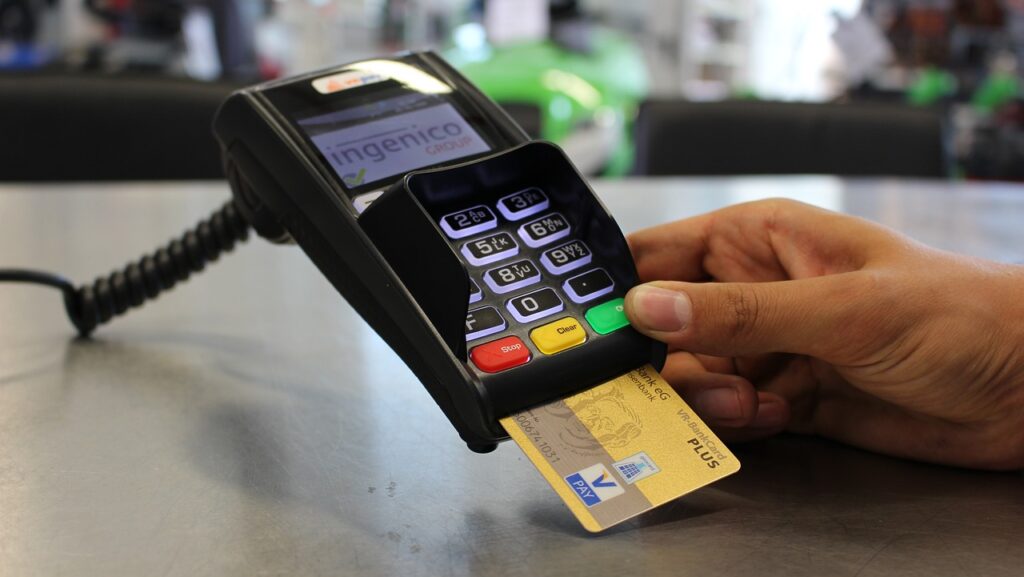Decoding the Difference: Charge Cards vs. Credit Cards

In the world of plastic money, two terms often come up: charge cards and credit cards. While they might seem similar at first glance, they serve different purposes and come with distinct terms and conditions. In this blog post, we’ll unravel the differences between charge cards and credit cards, helping you make informed financial decisions.
What’s the Difference Between a Charge Card and a Credit Card?
Charge cards and credit cards are both financial tools that allow consumers to make purchases, but they function differently. Here are the key differences between a charge card and a credit card:
Charge Cards: Pay in Full or Bust
Charge cards are financial tools that require you to pay the full balance every month. There’s no option to carry a balance from one billing cycle to the next. Essentially, you’re “charging” your purchases, and you must “charge” the full amount back to zero each month. Here are the key characteristics of charge cards:
1. No Carryover Balances: With a charge card, there’s no room for carrying over unpaid balances. You must settle the entire amount when the statement arrives.
2. No Interest Charges: Since you’re paying in full each month, charge cards typically do not charge interest on unpaid balances.
3. No Pre-set Spending Limit: Charge cards don’t have a pre-set spending limit like credit cards. Instead, your issuer assesses your spending patterns and creditworthiness to determine whether to approve transactions.
4. Positive Credit Impact: Using a charge card responsibly can have a positive impact on your credit score, as it demonstrates your ability to manage debt effectively.
5. Annual Fees: Many charge cards have annual fees, often higher than those of credit cards, in exchange for their unique benefits.
Credit Cards: Flexibility with a Price
Credit cards, on the other hand, offer more financial flexibility but come with the potential cost of interest charges if you carry a balance. Here’s how credit cards differ:
1. Carryover Balances: Credit cards allow you to carry a balance from one billing cycle to the next by making minimum payments. However, carrying a balance can result in interest charges.
2. Interest Charges: If you choose not to pay the full balance by the due date on your credit card statement, you may incur interest charges. The interest rate is known as the annual percentage rate (APR).
3. Credit Limits: Credit cards have a predetermined credit limit, which is the maximum amount you can charge. Your credit limit is based on factors like your credit history and the card issuer’s terms.
4. Credit Score Impact: Credit cards can also impact your credit score, with your credit utilization rate (the ratio of your credit card balance to your credit limit) playing a crucial role.
5. Fees: Credit cards may come with various fees, including annual fees, late payment fees, over-limit fees, and balance transfer fees, depending on the card’s terms and your actions.
6. Broader Eligibility: Credit cards offer options for individuals with a wider range of credit scores, including subprime credit cards for those with less-than-perfect credit.
FAQs About Charge Cards and Credit Cards

Navigating the world of plastic money can be tricky. To clear the air, we’ve compiled essential questions about charge cards and credit cards, along with their answers.
Q1: What is the primary difference between a charge card and a credit card?
– A1: The primary difference is how you handle balances. Charge cards require you to pay in full every month, while credit cards allow you to carry a balance (with potential interest charges).
Q2: Can you carry a balance on a charge card?
– A2: No, charge cards require you to pay the full balance each month; carrying over balances is not an option.
Q3: Do charge cards charge interest on unpaid balances?
– A3: Typically, charge cards do not charge interest on unpaid balances since you’re required to pay in full each month.
Q4: What is a pre-set spending limit, and do charge cards have them?
– A4: A pre-set spending limit is the maximum amount you can charge on your card. Charge cards often don’t have pre-set limits; spending is assessed based on your spending patterns and creditworthiness.
Q5: How do credit cards impact credit scores?
– A5: Credit cards can impact your credit score positively if used responsibly. Timely payments and a low credit utilization rate can boost your score.
Q6: What fees are associated with charge cards and credit cards?
– A6: Charge cards may have higher annual fees, while credit cards can come with various fees such as annual fees, late payment fees, over-limit fees, and balance transfer fees, depending on the card.
Q7: Are charge cards or credit cards better for building credit?
– A7: Both can help build credit when used responsibly. However, charge cards require full, on-time payments, showcasing your ability to manage debt effectively.
Q8: Which offers more financial flexibility, charge cards, or credit cards?
– A8: Credit cards offer more flexibility due to the option to carry balances. However, this flexibility comes with the potential cost of interest charges.
Q9: Can individuals with less-than-perfect credit get approved for credit cards?
– A9: Yes, there are credit card options designed for individuals with various credit scores, including subprime credit cards for those with less-than-perfect credit.
Q10: What factors should I consider when choosing between a charge card and a credit card?
– A10: Consider your financial discipline, spending habits, and goals. If you can pay in full each month, a charge card may work. If you need flexibility, a credit card might be more suitable.
These FAQs provide a comprehensive understanding of charge cards and credit cards, helping you make informed decisions about which financial tool aligns with your needs and financial goals.
Conclusion
In summary, charge cards demand financial discipline, requiring you to pay the full balance each month without the option to carry over unpaid amounts. They often have no pre-set spending limits but come with higher annual fees. Credit cards, on the other hand, provide more financial flexibility but may result in interest charges if you don’t pay the full balance. They have pre-determined credit limits and come with various fees. Understanding these differences is crucial for choosing the right financial tool that aligns with your spending habits and financial goals.





